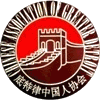The Chinese community includes people who self-identify as Chinese. They may be American-born or immigrants from China. They tend to have more education than the overall foreign-born population and the U.S.-born population.
Many Chinese Americans live in metropolitan areas. They also form communities in rural towns. These towns usually have a Chinatown, where residents can shop for familiar foods and go to temples.
Origins
Chinese communities are scattered across the United States, with the highest concentrations in large cities. Smaller pockets of Chinese Americans are also found in rural towns, especially those with a college or university. The income and social status of Chinese Americans vary widely, from impoverished working class people in Chinatowns to highly educated professionals in affluent suburbs.
In the 1850s, repressive government policies, economic pressures, and political instability in southern China drove large numbers of Chinese workers to the West Coast of North America to take part in the California Gold Rush. Despite racial discrimination, the Chinese immigrants established self-sufficient communities that became known as Chinatowns.
In addition to their businesses and shops, these communities built religious, civic, and family associations. They were often organized into clan or district associations, based on the county of origin in China. These groups were a vital source of support for the community during hard times. They also promoted and supported cultural activities, such as opera and acrobatic shows.
Ethnicity
The Chinese are a very diverse group. There are 56 officially recognized ethnic groups within China, which includes a wide range of cultures, languages, foods and traditions.
Many Chinese in America have integrated into American society and culture while maintaining their roots by establishing community organizations, celebrating traditional festivals and teaching their children about their heritage. The Chinese communities in Seattle and Portland, for example, have established their own public institutions to preserve their cultural heritage, including museums and language schools.
Many of the immigrants who came to Hawaii, the Philippines and Australia as indentured workers brought Chinese culture with them and created their own communities with a distinct Chinese identity. In the United States, cities with significant populations of Chinese Americans include San Francisco and Houston. However, Chinese Americans are also found in smaller towns, often university-college towns. They can be seen in business and professional roles as well as in restaurants, markets, and other cultural venues.
Religion
The vast majority of Chinese practice folk religion – a grouping that includes beliefs such as worshipping spirits and ancestors, along with ritual practices including funerals. Some also follow a specific monotheistic religion.
The state-run Communist Party is atheist, and in recent years has pushed to sinicize religious groups by requiring them to conform to official doctrines. The government closely monitors registered and unregistered religious groups. It has cracked down on activities it considers illegal, and has encouraged self-censorship among believers.
Scholarly interest in the social scientific study of religion in China has grown in recent decades. Several academic institutions have emerged to provide training and opportunities for researchers. Chinese scholars often work alongside scholars from other countries, including Purdue University sociologist Fenggang Yang, who founded the annual Conference on the Social Scientific Study of Religion in China and established a related research center in 2004.
Family
Regardless of class, Chinese people value family. Many of them place a high value on the pursuit of moral virtues, cultivating frugality and setting an example for their children. They also prioritize national interests and are loyal to their country.
Traditionally, membership in a clan was defined by a shared surname and common patrilineal descent from a putative apical ancestor (although anthropologists note that this ancestor may be mythical). Clans were social-relations institutions and served as mutual-aid associations.
In the United States, the Chinese community is spread across a wide range of socioeconomic backgrounds. Some live in Chinatowns of major cities while others are firmly ensconced in affluent suburban communities. In traditional China, marriage was a way for a woman to leave her own family and join that of her husband’s. This is reflected in the phrase Jia Chu Qu (jia chun qu; to marry out). In Mandarin Chinese, it is common to use the character Wai (wai; outside) to refer to maternal grandparents.
